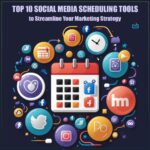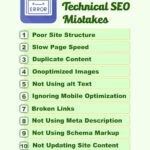In today’s digital age, where marketing channels are abundant, broadcast advertising remains a reliable method for reaching mass audiences. With its ability to captivate viewers through audiovisual mediums, broadcast advertising continues to play an important role in shaping consumer behavior and driving brand awareness. In this comprehensive guide, we’ll learn about the importance of broadcast advertising, exploring its definition, evolution, strategies, and impact on modern digital marketing campaigns.
What is Broadcast Advertising?
Broadcast advertising refers to the distribution of promotional messages through television (TV) and radio platforms to a wide audience. It encompasses various formats, including television commercials, radio spots, sponsorships, and infomercials. Unlike print or digital advertising, which relies on static images or text, broadcast advertising leverages audiovisual elements to engage viewers and evoke emotional responses.
You may have seen advertisement while watching TV Series or movie on TV, that type of advertisement is a example of broadcat advertising.
History of Broadcast Advertising
The roots of broadcast advertising can be traced back to the early 20th century with the advent of radio broadcasting. Commercial radio stations began airing sponsored programs featuring advertisements from local businesses. The introduction of television in the mid-20th century revolutionized the advertising landscape, providing marketers with a powerful visual medium to showcase their products and services.

Image Source: https://www.madhive.com/resources/article/history-of-tv-advertising
Key Components of Broadcast Advertising
- Visual Appeal: Television commercials utilize compelling visuals, including product demonstrations, testimonials, and storytelling, to capture the audience’s attention and convey brand messages effectively.
- Audio Elements: Both television and radio advertisements incorporate impactful soundtracks, jingles, voiceovers, and sound effects to create memorable experiences and enhance brand recognition.
- Scripting: Crafting concise and persuasive scripts is essential for delivering compelling messages within the limited timeframe of broadcast advertisements.
- Call to Action (CTA): Effective broadcast advertisements include clear and compelling calls to action prompting viewers to take specific actions, such as visiting a website, making a purchase, or contacting the advertiser.
Strategies for Successful Broadcast Advertising
- Audience Segmentation: Understanding the demographics, interests, and preferences of the target audience is crucial for tailoring broadcast advertisements to resonate with specific consumer segments.
- Creative Storytelling: Engaging storytelling techniques, narrative arcs, and emotional appeals can captivate viewers and leave a lasting impression.
- Brand Integration: Seamless integration of brand messaging into the content of television shows, radio programs, or live events can enhance brand visibility and credibility.
- Multi-Channel Approach: Supplementing broadcast advertising efforts with digital marketing channels, such as social media, online streaming platforms, and podcasts, can extend reach and reinforce brand messaging.
Impact and Effectiveness of Broadcast Advertising
Despite the rise of digital media, broadcast advertising continues to be a formidable force in the marketing landscape due to its unparalleled reach and influence. Television commercials and radio spots have the power to reach millions of viewers and listeners simultaneously, making them ideal for building brand awareness on a massive scale. Moreover, the visual and auditory stimulation offered by broadcast advertisements can leave a lasting impression on audiences, leading to increased brand recall and purchase intent.
Frequently Asked Questions –
What is broadcast advertising, and how does it differ from other forms of advertising?
Broadcast advertising refers to the promotion of products or services through television and radio platforms. Unlike print or digital advertising, broadcast ads utilize audiovisual elements to engage audiences through compelling visuals, soundtracks, and storytelling.
What are the benefits of broadcast advertising?
Broadcast advertising offers unparalleled reach, allowing businesses to connect with mass audiences simultaneously. It also provides the opportunity to showcase products or services in a dynamic and engaging format, enhancing brand awareness and recall.
How can I measure the effectiveness of broadcast advertising campaigns?
Key performance indicators (KPIs) for measuring the effectiveness of broadcast advertising include audience reach, frequency of ad airing, brand recall, website traffic, and sales conversions. Utilizing audience surveys, tracking tools, and media analytics can help assess campaign performance.
What factors should I consider when crafting a successful broadcast advertisement?
Factors to consider include understanding the target audience, creating compelling visual and auditory elements, delivering a clear message within the allotted timeframe, and incorporating a strong call to action (CTA) to prompt viewer response.
How can I ensure my broadcast advertisement stands out among competitors?
To stand out, focus on creative storytelling, engaging visuals, memorable soundtracks, and innovative concepts that resonate with viewers emotionally. Additionally, consider unique placement opportunities, such as sponsorships or product integrations within popular programs.
What are the common pitfalls to avoid in broadcast advertising?
Common pitfalls include neglecting audience research, using generic or uninspiring creative elements, failing to differentiate from competitors, and overlooking regulatory compliance. It’s essential to conduct thorough planning and execution to maximize campaign effectiveness.
Is broadcast advertising suitable for all types of businesses?
While broadcast advertising can be effective for businesses of all sizes and industries, its suitability depends on factors such as target audience demographics, budget considerations, and marketing objectives. Consulting with advertising professionals can help determine the best approach for your business.
How can I optimize my budget for broadcast advertising?
Optimizing budget allocation involves balancing reach, frequency, and production costs to maximize campaign effectiveness within budget constraints. Consider factors such as time slots, program popularity, and negotiation strategies to optimize budget utilization.
What role does storytelling play in broadcast advertising?
Storytelling is crucial in broadcast advertising as it helps create emotional connections with audiences, humanize brands, and make messages memorable. Compelling narratives, character development, and plot arcs can engage viewers and leave a lasting impression.
How can I stay updated on trends and innovations in broadcast advertising?
Staying updated involves monitoring industry publications, attending advertising conferences, networking with industry professionals, and analyzing successful campaigns. Additionally, leveraging digital platforms for audience engagement and feedback can provide valuable insights for continuous improvement.
Wrapping up
In a dynamic and ever-evolving marketing landscape, broadcast advertising remains a cornerstone of effective brand promotion and audience engagement. By harnessing the power of television and radio platforms, marketers can connect with mass audiences, convey compelling brand messages, and drive consumer action. As technology continues to advance, broadcast advertising will undoubtedly evolve, but its ability to captivate, inform, and inspire will endure as a timeless marketing strategy.



